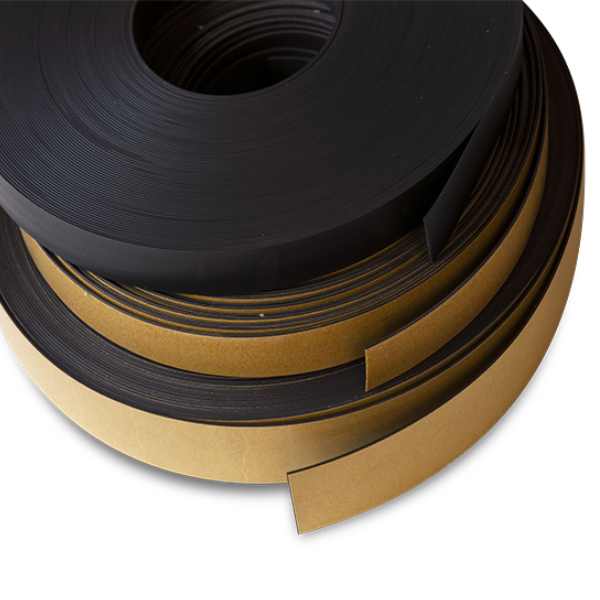Comparison: Applications of CM1 Isotropic and CM2 Anisotropic Magnetic Tapes
Magnetic tapes, also known as flexible magnets, are widely appreciated for their adaptability to a variety of metal surfaces. There are different types, but this article focuses on comparing CM1 isotropic and CM2 anisotropic magnetic tapes, their key uses, and practical advantages.
CM1 Isotropic Magnetic Tape: Flexibility and Everyday Use
CM1 isotropic tape is magnetized on one side with a multipole pattern, offering sufficient holding power for everyday applications. It’s flexible, easy to cut, and quick to apply, making it ideal for labeling, signage, and organization.
Available in several formats:
- Natural magnetic tape: Widely used in warehouses, stores, and commercial spaces for fast and effective product organization.
- White PVC magnetic tape: Similar to the natural version but coated in white PVC, making it writable and more aesthetic.
- Adhesive magnetic tape: Covered with adhesive on the non-magnetic side for use on non-metallic surfaces.
- Magnetic labels: Supplied with a cardboard insert and plastic cover, perfect for reusable product labeling.
Key Uses for CM1 Tape
- Organizing stock shelves and storage units.
- Displaying temporary signs or product tags.
- Educational use on whiteboards.
- Vehicle branding with magnetic advertising.
- Displaying photos or notes.
CM1 tapes can be attached to wood, tile, wallpaper, or stone using their self-adhesive backing. They are also available in various colors, which is ideal for visual communication or decorative displays. Their biggest benefit lies in ease of use, flexibility, and safety—no tools or risk of surface damage.
CM2 Anisotropic Magnetic Tape: Power and Professional Performance
CM2 anisotropic tape is engineered for more demanding applications. With aligned magnetic particles, it delivers stronger magnetic force than isotropic options. It can be magnetized on one or both sides, depending on your needs.
Common formats include:
- Magnetic sheets: Sold by the meter and perfect for professional signage.
- Custom-cut colored tape: Often used in industrial settings, especially for activating magnetic sensors (e.g., in elevators).
- Die-cut magnetic tape: Available in custom shapes for a wide range of industrial uses.
Advantages of CM2 Tape
- Stronger magnetic pull due to particle alignment.
- Optional double-sided magnetization.
- Heat-resistant up to 80 °C.
- Widely used in electronics, advertising, signage, and labeling.
Conclusion
CM1 isotropic tapes are best suited for light-duty, flexible, and practical everyday tasks. CM2 anisotropic tapes, however, offer greater strength and precision, making them ideal for industrial and technical environments.
Choosing the right type depends on your application, surface type, and magnetic strength needed. Both types offer ease of installation and cost-effective solutions for organization, safety, and communication.
